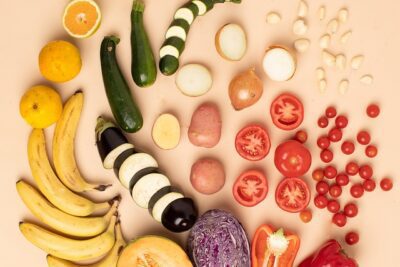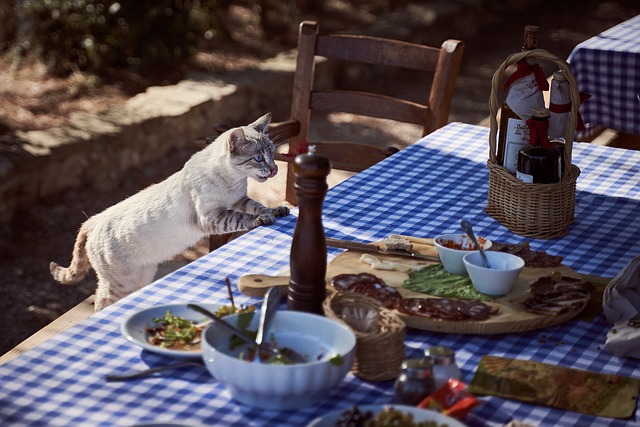



If you find yourself in a situation where you don't have cat food available, one alternative option is to make homemade cat food. This allows you to control the ingredients and ensure that your cat is getting a balanced diet. However, it's important to note that homemade cat food should not be a long-term solution and should only be used temporarily until you can provide proper cat food.
To make homemade cat food, you can use ingredients such as cooked chicken, turkey, or beef. Make sure to remove any bones and seasonings before feeding it to your cat. You can also include cooked vegetables like carrots or peas for added nutrition. It's important to consult with a veterinarian or a pet nutritionist to ensure that you are providing a balanced diet for your cat.
Another alternative option is to feed your cat a raw food diet. This involves feeding your cat raw meat, bones, and organs. Raw food diets are believed to mimic a cat's natural diet in the wild and can provide them with essential nutrients. However, it's important to note that raw food diets can be controversial and may carry a risk of bacterial contamination.
If you choose to feed your cat a raw food diet, it's crucial to do thorough research and consult with a veterinarian to ensure that you are providing a balanced and safe diet for your cat. It's also important to handle raw meat properly to minimize the risk of bacterial contamination.
If you don't have dry cat food available, another alternative option is to feed your cat wet food. Wet cat food is typically higher in moisture content and can help keep your cat hydrated. It also provides a different texture and taste compared to dry cat food, which some cats may prefer.
Wet cat food can be purchased in cans or pouches from pet stores or supermarkets. Look for options that are labeled as complete and balanced to ensure that your cat is getting all the necessary nutrients. It's important to note that wet cat food can spoil quickly once opened, so make sure to store any leftovers in the refrigerator and discard them if they have been sitting out for too long.
If you don't have cat food available, you can also feed your cat cooked meat as a temporary alternative. Cooked chicken, turkey, or beef can be a good source of protein for your cat. However, it's important to remove any bones, skin, and seasonings before feeding it to your cat.
It's important to note that cooked meat should only be used as a temporary solution and should not replace a balanced cat food diet in the long term. Consult with a veterinarian to ensure that you are providing the right amount and type of meat for your cat.
Another alternative option for feeding your cat if you don't have cat food available is fish. Cats are known to be attracted to the smell and taste of fish. However, it's important to note that fish should not be the sole source of nutrition for your cat as it lacks certain essential nutrients.
If you choose to feed your cat fish, make sure it is cooked thoroughly and free from any seasonings or additives. Remove any bones before feeding it to your cat. It's also important to note that some cats may be allergic to fish, so monitor your cat for any adverse reactions.
Eggs can be another alternative option to feed your cat if you don't have cat food available. Eggs are a good source of protein and can be cooked and served to your cat. Make sure to cook the eggs thoroughly and remove the shell before feeding them to your cat.
It's important to note that eggs should be fed in moderation and should not replace a balanced cat food diet in the long term. Consult with a veterinarian to ensure that you are providing the right amount and frequency of eggs for your cat.
While cats are obligate carnivores and require a diet primarily consisting of meat, some vegetables can be included as a small portion of their diet. Vegetables like cooked carrots or peas can provide additional nutrients and fiber for your cat.
It's important to note that vegetables should only be a small part of your cat's diet and should not replace the main source of protein. Consult with a veterinarian to ensure that you are providing the right type and amount of vegetables for your cat.
If you find yourself in a situation where you don't have cat food available, you can consider using supplements to provide some essential nutrients for your cat. However, it's important to note that supplements should not replace a balanced cat food diet and should only be used temporarily.
Consult with a veterinarian to determine which supplements are appropriate for your cat and the correct dosage. It's important to follow the veterinarian's recommendations to ensure that your cat is getting the necessary nutrients.
If you find yourself in a situation where you don't have cat food available, it's important to consult with a veterinarian. They can provide guidance on alternative options and ensure that your cat is getting a balanced diet.
A veterinarian can also assess your cat's overall health and make recommendations based on their specific needs. They may also be able to provide you with samples of cat food or direct you to local resources that can help provide food for your cat.
Remember, it's important to provide your cat with a balanced diet that meets their nutritional needs. While alternative options can be used temporarily, it's crucial to ensure that your cat has access to proper cat food for their long-term health and well-being.
Leave a Reply
Related posts